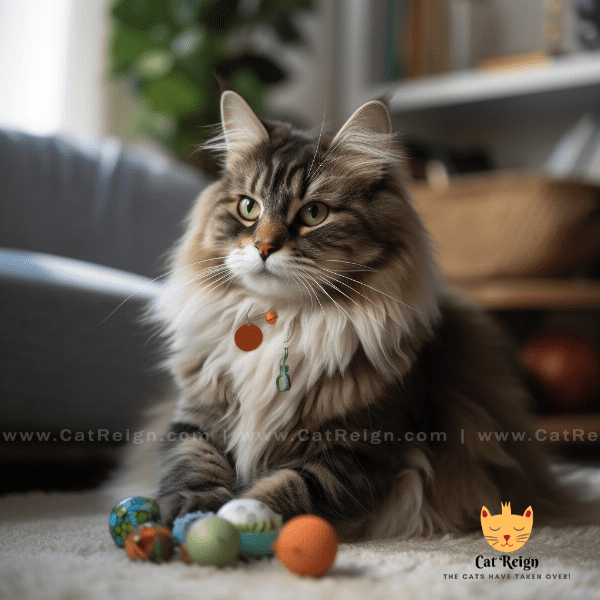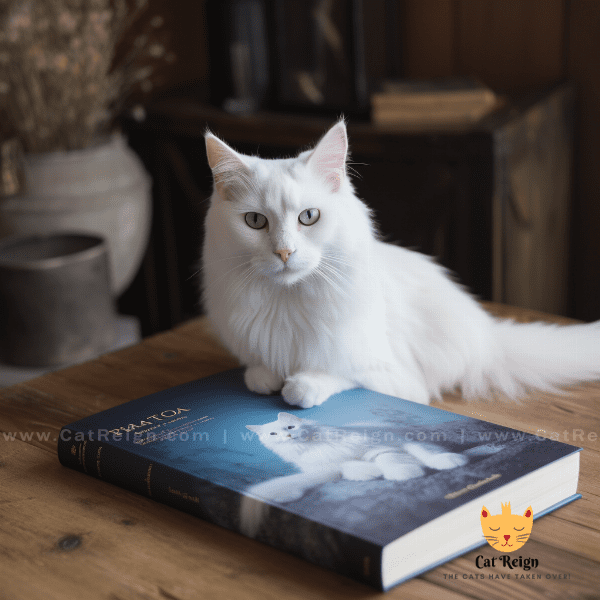Table of Contents
- “History and Origin of Norwegian Forest Cats”
- “Physical Characteristics of Norwegian Forest Cats”
- “Personality Traits and Temperament of Norwegian Forest Cats”
- “The Unique Coat and Grooming Needs of Norwegian Forest Cats”
- “Training and Exercise Tips for Norwegian Forest Cats”
- “Health Concerns to Watch Out for in Norwegian Forest Cats”
- “Norwegian Forest Cats in Popular Culture”
- “Adopting a Norwegian Forest Cat: What You Need to Know”
- “Interacting with Other Pets: Norwegian Forest Cat Edition”
- “Fun Activities to Keep Your Norwegian Forest Cat Entertained”
History and Origin of Norwegian Forest Cats
The Norwegian Forest Cat, or “Norsk Skogkatt” as it’s known in its native Norway, is a long-haired breed that’s been around for centuries. Its exact origins are not entirely clear, but it’s believed to have originated from the cats that traveled with Vikings on their ships.
A Working Cat
The Norwegian Forest Cat is known for its excellent hunting skills and its ability to survive harsh winters. These traits made the breed a popular working cat on Norwegian farms and in rural areas, where it was valued for its ability to keep vermin under control.
Almost Extinct
Despite its popularity in rural Norway, the breed nearly became extinct during the mid-20th century due to the introduction of modern farming techniques and the increasing popularity of other Cat breeds. Fortunately, a group of dedicated breeders worked to preserve the breed, and today the Norwegian Forest Cat is recognized as a distinct breed by cat organizations around the world.
Characteristics
The Norwegian Forest Cat is a large, muscular cat with a long, thick coat that protects it from the cold. Its coat comes in a variety of colors and patterns, including white, black, blue, cream, and red. The breed has almond-shaped eyes that are usually green or gold and large, tufted ears that give it a distinctive appearance.
Conclusion
The Norwegian Forest Cat has a fascinating history and a unique set of characteristics that make it a beloved breed among cat lovers. Whether you’re looking for a working cat or a friendly companion, the Norwegian Forest Cat is sure to win your heart.
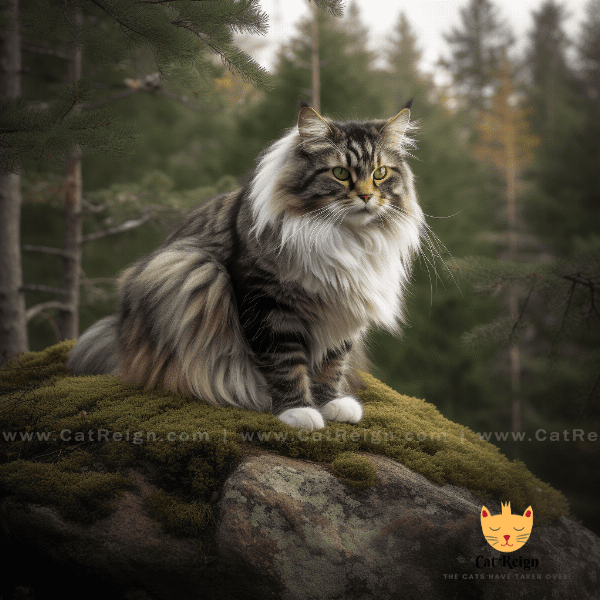
Physical Characteristics of Norwegian Forest Cats
The Norwegian Forest Cat is a large, muscular cat with a distinctive appearance. Here are some of its physical characteristics:
Body Type
The Norwegian Forest Cat is a medium to large-sized cat with a long, sturdy body. It has a broad, muscular chest and strong legs, which make it an excellent jumper and climber. The breed also has a long, bushy tail that helps it maintain balance.
Coat
The Norwegian Forest Cat has a long, thick, water-resistant coat that protects it from harsh weather conditions. Its fur is made up of two layers, a dense, woolly undercoat, and a longer, silky topcoat. The breed’s coat comes in a variety of colors and patterns, including tabby, tortoiseshell, and solid colors.
Head and Facial Features
The Norwegian Forest Cat has a triangular-shaped head with a strong jawline and high cheekbones. Its ears are large, tufted, and placed high on the head, which gives the breed a distinctive appearance. The breed’s eyes are almond-shaped and usually green or gold.
Conclusion
The Norwegian Forest Cat’s physical characteristics make it a unique and attractive breed. Its long, thick coat, sturdy body, and distinctive head and facial features make it a beloved breed among cat lovers. If you’re considering adopting a Norwegian Forest Cat, make sure you’re prepared for the grooming needs that come with its thick coat.
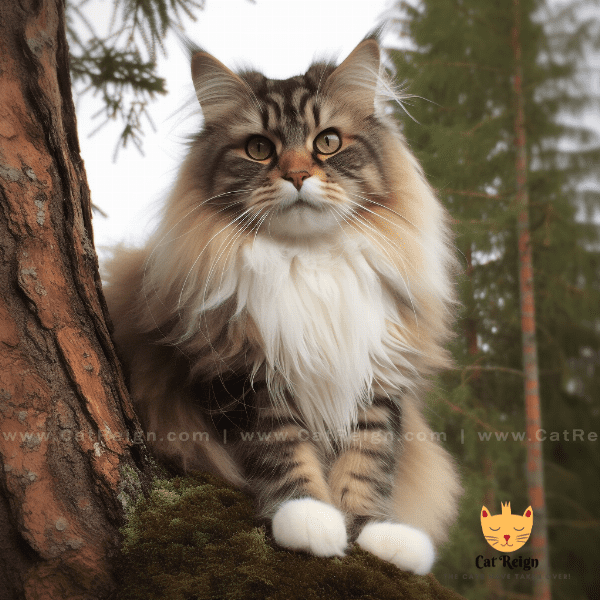
Personality Traits and Temperament of Norwegian Forest Cats
The Norwegian Forest Cat is known for its friendly and outgoing personality. Here are some of its personality traits and temperament:
Affectionate and Loyal
Norwegian Forest Cats are affectionate and loyal pets. They are known for forming strong bonds with their owners and following them around the house. This breed is often described as “dog-like” in its loyalty and devotion to its humans.
Intelligent and Playful
Norwegian Forest Cats are intelligent and playful pets. They enjoy interactive play and are known for their ability to problem-solve. This breed is particularly fond of puzzle toys and games that challenge their intelligence.
Independent and Adventurous
While Norwegian Forest Cats are loyal and affectionate with their owners, they are also independent and adventurous cats. They enjoy exploring their surroundings and have a natural curiosity that often leads them into mischief.
Good with Children and Other Pets
Norwegian Forest Cats are generally good with children and other pets. They are patient and gentle with children and enjoy playing with other cats and dogs. However, as with any cat, early socialization is essential to ensure that they learn appropriate behavior.
Conclusion
The Norwegian Forest Cat’s personality and temperament make it an excellent pet for families and individuals looking for an affectionate and playful companion. If you’re considering adopting a Norwegian Forest Cat, make sure you’re prepared to provide plenty of interactive play and mental stimulation to keep your cat happy and healthy.
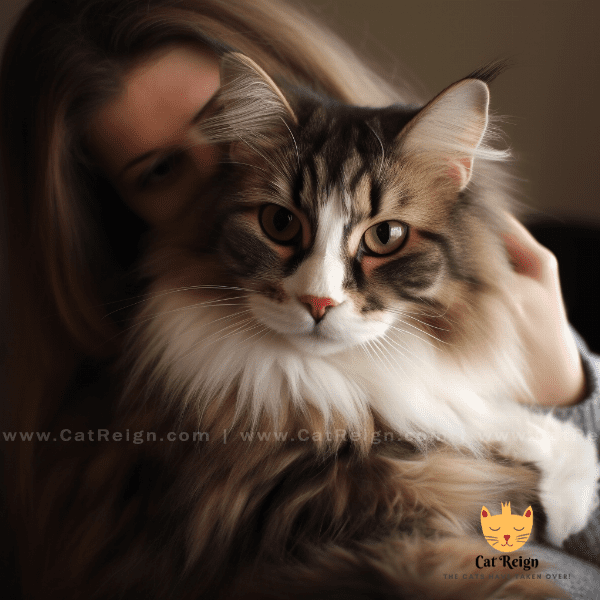
The Unique Coat and Grooming Needs of Norwegian Forest Cats
The Norwegian Forest Cat’s long, thick coat is one of its most distinctive features. However, this coat requires regular grooming to keep it healthy and prevent matting. Here’s what you need to know about the unique coat and grooming needs of Norwegian Forest Cats:
Coat Maintenance
Norwegian Forest Cats require regular brushing to keep their coat in good condition. Brushing helps to remove loose hair and prevent matting, which can be painful for the cat. It’s recommended that you brush your cat at least once a week, and more frequently during shedding season.
Bathing
While Norwegian Forest Cats are generally fastidious groomers, they may require the occasional bath to keep their coat clean and healthy. When bathing your cat, be sure to use a cat-specific shampoo and avoid getting water in their ears.
Nail Trimming
Regular nail trimming is essential for all cats, including Norwegian Forest Cats. Long nails can be painful and lead to infection, so it’s important to keep them trimmed. You can either trim your cat’s nails yourself or take them to a professional groomer.
Dental Care
Like all cats, Norwegian Forest Cats are prone to dental problems, such as tartar buildup and gum disease. Regular dental care, including brushing your cat’s teeth and providing dental treats, can help prevent these issues.
Conclusion
The Norwegian Forest Cat’s unique coat requires regular grooming to keep it healthy and prevent matting. With a little bit of effort, you can keep your cat’s coat looking and feeling its best. Remember to also prioritize your cat’s other grooming needs, such as nail trimming and dental care, to ensure that your furry friend stays healthy and happy.
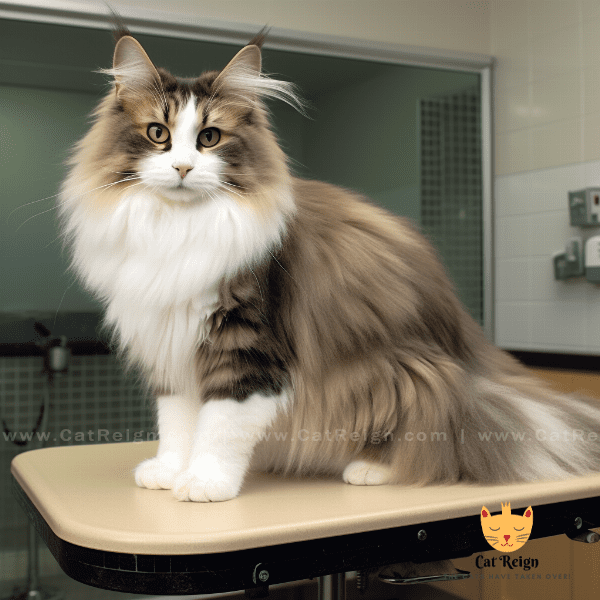
Training and Exercise Tips for Norwegian Forest Cats
Interactive Play
Norwegian Forest Cats love interactive play and games that challenge their intelligence. Puzzle toys, such as treat balls or catnip puzzles, can keep your cat mentally stimulated while also providing exercise.
Clicker Training
Clicker training is an excellent way to teach your cat new behaviors and tricks. The clicker is used to mark the desired behavior, and then the cat is rewarded with a treat. With practice, your cat can learn a variety of tricks, such as sit, stay, and come.
Leash Training
Leash training is a great way to provide your cat with outdoor exercise while also keeping them safe. Start by getting your cat used to wearing a harness indoors before moving outside. It’s important to supervise your cat during leash walks and avoid letting them wander into areas with busy traffic.

Health Concerns to Watch Out for in Norwegian Forest Cats
Like all cats, Norwegian Forest Cats are prone to certain health issues. Here are some health concerns to watch out for in this breed:
Hip Dysplasia
Hip dysplasia is a genetic condition that affects the hip joint and can cause pain and mobility issues. While Norwegian Forest Cats are not as prone to hip dysplasia as some other breeds, it’s still important to have your cat’s hips evaluated by a veterinarian.
Hypertrophic Cardiomyopathy
Hypertrophic cardiomyopathy is a condition where the heart muscle becomes thickened, making it harder for the heart to pump blood. This condition is common in all cats, including Norwegian Forest Cats. Signs of hypertrophic cardiomyopathy include coughing, lethargy, and difficulty breathing.
Polycystic Kidney Disease
Polycystic kidney disease is a genetic condition that causes cysts to form on the kidneys, which can lead to kidney failure. Norwegian Forest Cats are prone to this condition, so it’s important to have your cat’s kidneys evaluated regularly by a veterinarian.
Obesity
Norwegian Forest Cats are prone to obesity, which can lead to a variety of health issues, including diabetes, joint problems, and heart disease. Make sure to monitor your cat’s weight and feed them a balanced diet to prevent obesity.
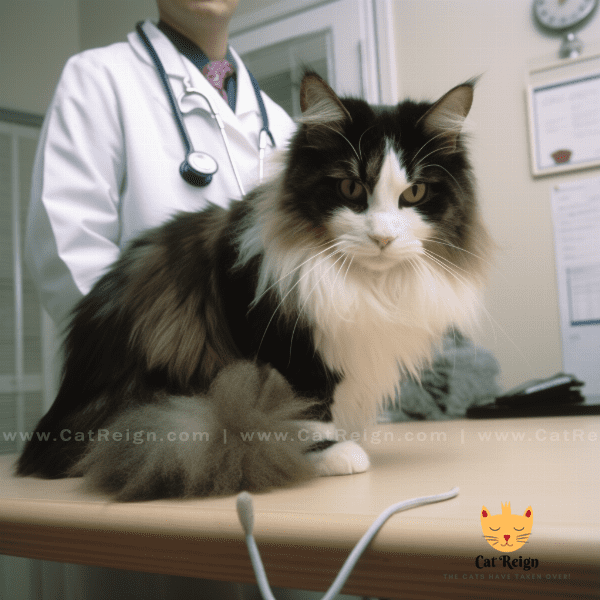
Norwegian Forest Cats in Popular Culture
Norwegian Forest Cats have made appearances in popular culture throughout history. Here are some examples:
Folklore
Norwegian Forest Cats have been a part of Norwegian folklore for centuries. In Norse mythology, the goddess Freya was said to ride a chariot pulled by two giant cats, which were believed to be Norwegian Forest Cats.
Children’s Books
Norwegian Forest Cats have been featured in several children’s books, including “The Cats of Roxville Station” by Jean Craighead George and “The Magic Pawpaw” by Ragnhild Scamell.
Film and Television
Norwegian Forest Cats have made appearances in film and television, including the 2019 film “Captain Marvel,” where a Norwegian Forest Cat named Goose plays a significant role. They’ve also made appearances on popular TV shows such as “Cats 101” and “My Cat from Hell.”
Internet Fame
Norwegian Forest Cats have become popular on the internet, with several famous cats gaining millions of followers on social media. Some notable Norwegian Forest Cats include Pusic, a cat from Russia with over 600,000 Instagram followers, and Smoothie, a Dutch cat with over 2 million Instagram followers.
Conclusion
Norwegian Forest Cats have a long history in Norwegian folklore and have made appearances in popular culture throughout history. From children’s books to film and television, these cats have captured the hearts of many. With their unique physical characteristics and friendly personality, it’s no wonder that they’ve become popular both in real life and in popular culture.
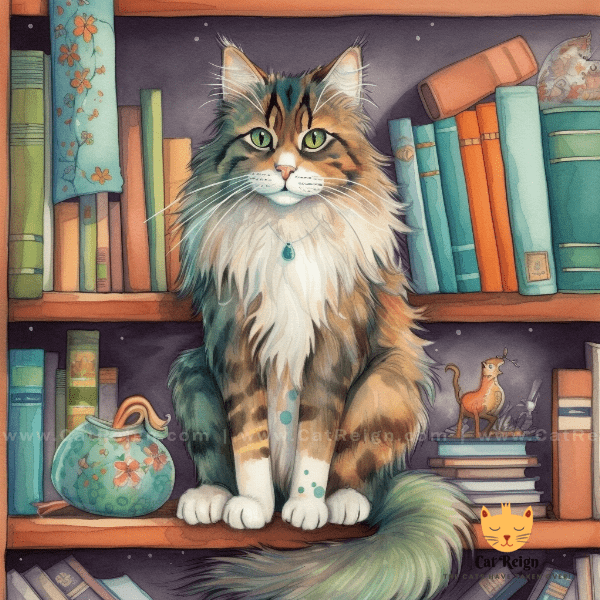
Adopting a Norwegian Forest Cat: What You Need to Know
Adopting a Norwegian Forest Cat can be a rewarding experience, but it’s important to be prepared for their unique needs. Here’s what you need to know before adopting a Norwegian Forest Cat:
Grooming Needs
Norwegian Forest Cats have a thick, double-layered coat that requires regular grooming. They need to be brushed at least once a week to prevent matting and maintain the health of their coat. If you’re not prepared to commit to regular grooming, a Norwegian Forest Cat may not be the right pet for you.
Exercise and Playtime
Norwegian Forest Cats are active and playful cats that require daily exercise and mental stimulation. They enjoy interactive play and games that challenge their intelligence. Providing them with plenty of toys and playtime is essential to keep them healthy and happy.
Health Concerns
As with all cats, Norwegian Forest Cats are prone to certain health issues. These include hip dysplasia, hypertrophic cardiomyopathy, and polycystic kidney disease. Regular veterinary checkups and monitoring your cat’s weight can help prevent these health issues from becoming a problem.
Finding a Reputable Breeder or Rescue
If you’re interested in adopting a Norwegian Forest Cat, it’s essential to find a reputable breeder or rescue. Research breeders and rescues carefully and ask for references. A good breeder or rescue will be happy to answer any questions you have and provide you with information on the breed’s temperament and health concerns.
Conclusion
Adopting a Norwegian Forest Cat can be a wonderful experience, but it’s important to be prepared for their unique needs. Regular grooming, exercise and playtime, and monitoring their health are all essential to keep your cat healthy and happy. With the right preparation, a Norwegian Forest Cat can make a wonderful addition to any home.

Interacting with Other Pets: Norwegian Forest Cat Edition
Norwegian Forest Cats are generally friendly and get along well with other pets. However, proper introductions and socialization are key to ensuring that all pets in your household get along. Here are some tips for introducing your Norwegian Forest Cat to other pets:
Slow and Steady Introductions
When introducing your Norwegian Forest Cat to other pets, take it slow and introduce them gradually. Keep them separated for the first few days, allowing them to smell and hear each other through a closed door. Once they seem comfortable, you can start introducing them in short, supervised sessions.
Positive Reinforcement
Positive reinforcement is a key part of introducing pets to each other. Reward good behavior with treats and praise, and redirect negative behavior with toys or a firm “no.” This will help your pets associate positive experiences with each other.
Respect Your Cat’s Space
Norwegian Forest Cats are independent and enjoy having their own space. Make sure your cat has a safe and comfortable space where they can retreat to if they feel overwhelmed or stressed by other pets.
Socialization
Socialization is essential for all pets, including Norwegian Forest Cats. Early socialization can help prevent behavioral issues and ensure that your cat gets along well with other pets. Make sure to expose your cat to other animals, people, and experiences from a young age.
Conclusion
Norwegian Forest Cats are generally friendly and get along well with other pets, but proper introductions and socialization are key. Slow and steady introductions, positive reinforcement, and respecting your cat’s space are all essential to ensuring that all pets in your household get along. With the right approach, your Norwegian Forest Cat can live happily and harmoniously with other pets.
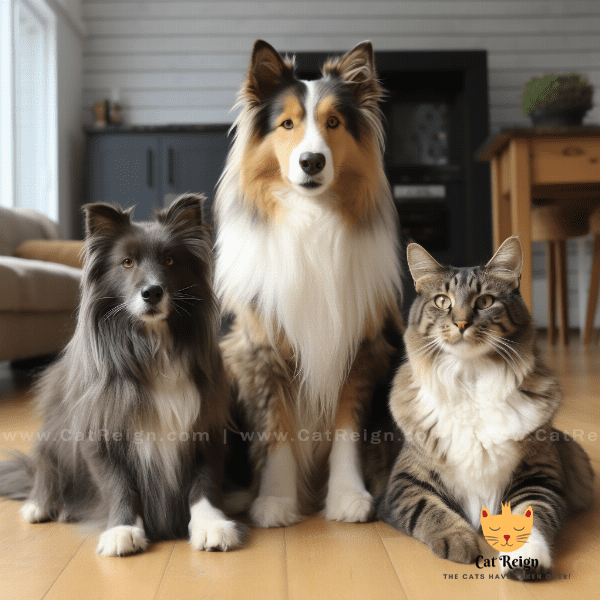
Fun Activities to Keep Your Norwegian Forest Cat Entertained
Norwegian Forest Cats are intelligent and active cats that require both physical and mental stimulation to stay healthy and happy. Here are some fun activities to keep your Norwegian Forest Cat entertained:
Puzzle Toys
Puzzle toys are a great way to keep your cat mentally stimulated while also providing exercise. Try using treat balls or catnip puzzles to keep your cat entertained.
Laser Pointers
Laser pointers are a popular way to play with cats and provide exercise. However, it’s important to remember that cats should never be allowed to catch the laser dot, as it can be frustrating and lead to behavioral issues.
Cat Trees and Perches
Norwegian Forest Cats are natural climbers and enjoy perching in high places. A tall cat tree or scratching post can provide your cat with both exercise and a cozy place to nap.
Interactive Playtime
Norwegian Forest Cats love interactive play and games that challenge their intelligence. Try using interactive toys or playing hide and seek to keep your cat entertained.
Outdoor Enclosures
If you have outdoor space, consider building an outdoor enclosure for your cat. This allows them to enjoy the outdoors safely and get exercise and mental stimulation.
Conclusion
Norwegian Forest Cats require both physical and mental stimulation to stay healthy and happy. With puzzle toys, laser pointers, cat trees and perches, interactive playtime, and outdoor enclosures, you can keep your cat entertained and engaged. Remember to always supervise your cat during playtime and provide them with plenty of opportunities for exercise and mental stimulation.
